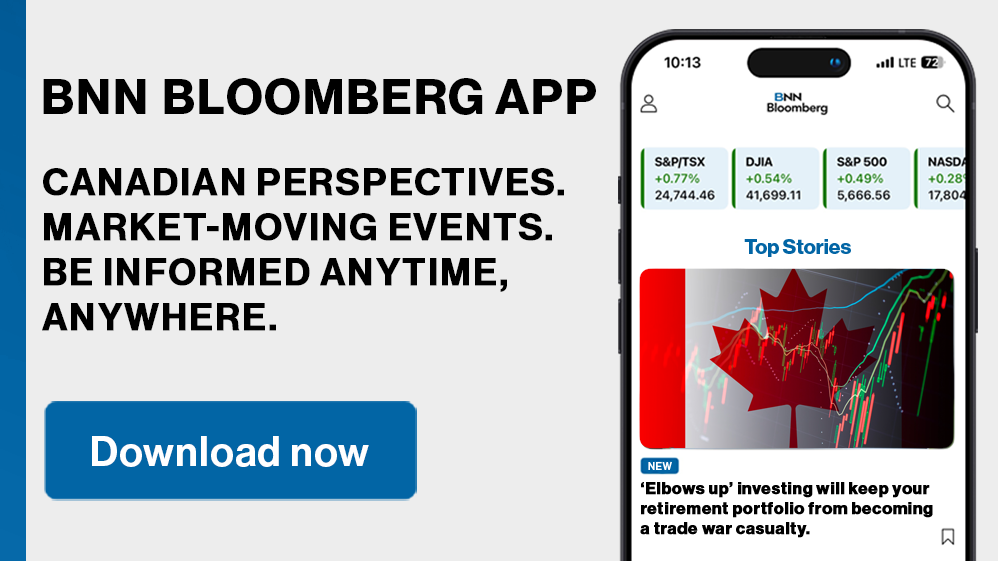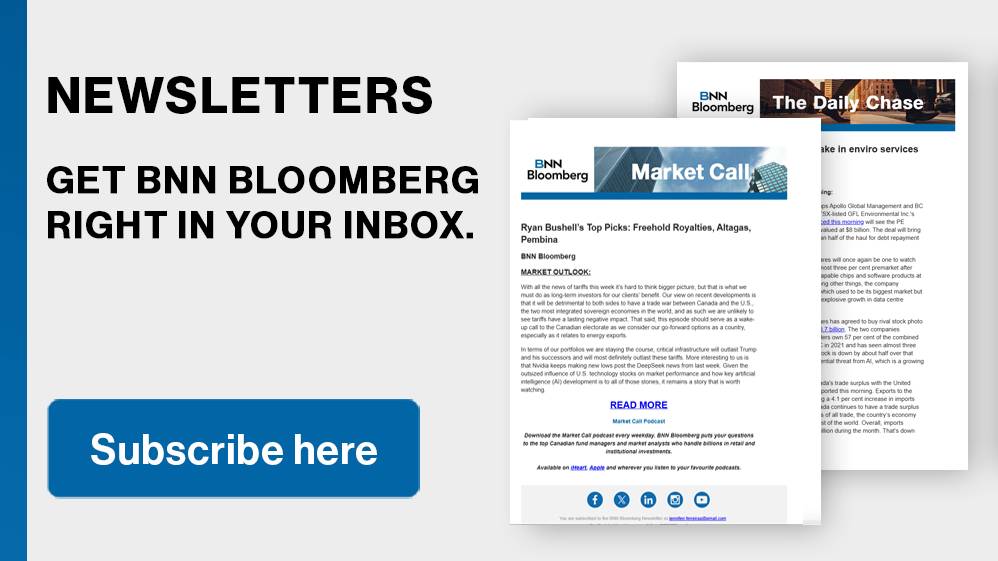The intensifying global trade war is heightening risks of a sharp growth slowdown in the U.S. and upending investors’ portfolios.
Both stocks and bonds have been on a wild ride in the first three months of the year in reaction to President Donald Trump’s barrage of tariffs. But one thing is becoming clear in this backdrop: bonds are a better bet than stocks even as the dollar wavers as a safe haven.
U.S. Treasuries have outperformed stocks this quarter, heading for a more than 2.5% gain, while the equity benchmark S&P 500 fell about 5%. It marks the first time since the onset of the pandemic in March 2020 that stocks fell, and bonds rose in a three-month period.
Barclays strategists led by Ajay Rajadhyaksha shifted their asset allocation view last week in favor of bonds over global equities for the first time in “several” quarters, saying that policy uncertainties pose “downside” risks to economic growth.
Morgan Stanley is also bullish on Treasuries, with strategists including Matthew Hornbach recommending investors add exposure to their portfolios via seven-year bonds in a note dated March 28. The bonds will benefit from a deterioration in risk sentiment amid tariff uncertainty and US growth concerns, they wrote.
More than $5 trillion has evaporated from US stock market valuation since late February as Trump plans to impose reciprocal levies on trading partners on April 2 as part of his sweeping tariff push. His administration has also targeted sectors like automobiles and industrial metals, aimed at boosting American manufacturing and employment.
“If the equity market corrects lower, it tightens financial conditions,” said Jack McIntyre, portfolio manager at Brandywine Global Investment Management. “And that’s good for bonds. You’d better be a buyer on weakness.”
Treasuries rallied for a second session in Asia trading on Monday, with the benchmark 10-year yield falling four basis points to 4.21%.
In addition to tariffs, investors will turn their attention to Friday’s jobs report to get the latest read on the labor market. Economists are expecting a slowdown in payroll growth and a steady unemployment rate.
“We believe risks to yields are skewed to the downside if the employment data disappoints,” Subadra Rajappa, head of US rates strategy at Societe Generale, wrote in a Friday note.
Goldman Sees More Fed Cuts This Year as Tariffs Dent Growth (1)
‘A Real Return’
The tentative return of the traditional correlation between stocks and bonds is a welcome relief for investors. It is after all the cornerstone of a 60/40 portfolio, a strategy which had largely been out of whack since 2022 when the post-pandemic inflation surge hammered both stocks and bonds simultaneously.
Since bonds are offering investors “a real return,” with yields that are currently higher than inflation, “it’s an ideal thing to increase the allocation in an overall portfolio,” Earl Davis, head of fixed income at BMO Global Asset Management, said on Bloomberg Television.
Additionally, bonds provide downside protection “in case you do get a severe selloff in risk assets,” he added.
Five-year notes led the rally during the quarter, driving its yield down by more than 40 basis points to about 4%. The outperformance of the five-year notes pushed its yield gap with 30-year bonds to the widest level since 2022.
Wall Street has touted five-year notes in recent months as an attractive offering among Treasuries, in large part because of their relative resilience to inflation and fiscal risks. By contrast, two-year notes are sensitive to the Federal Reserve’s interest-rate policy, while longer-term bonds tend to be more vulnerable to concern about ballooning deficits in the US.
A breakdown of yield moves shows bond investors are betting that tariffs will both boost inflation and drag down economic growth. The five-year real-yields dropped 65 basis points since the start of 2025, while the breakeven rate, which reflects investors’ inflation expectations, rose.
Fed Chair Jerome Powell recently said that the central bank will wait for greater clarity on the economy from the administration’s policy changes and that any tariff-induced inflation is likely to be transitory. But St. Louis Fed President Alberto Musalem cautioned Wednesday that policymakers should be wary of assuming such inflation would be entirely temporary.
Overnight-indexed swaps indicated that the Fed will cut the policy rate by the end of the first half of this year.
Despite recent confidence in the bond market, the lack of immediate Fed easing could hold back further Treasury gains. Ten-year yields were little changed in March after sliding 33 basis points in February, even as the S&P 500 extended its drop to 10% from a record high in February to enter a correction.
If yields move higher, Gregory Faranello, head of US rates trading and strategy for AmeriVet Securities, said he plans to buy more bonds after recently trimming his bullish positions.
“We do think the economy is likely to weaken,” said Faranello.
--With assistance from Masaki Kondo and Edward Bolingbroke.
(Updates with more details from Morgan Stanley note.)
©2025 Bloomberg L.P.













